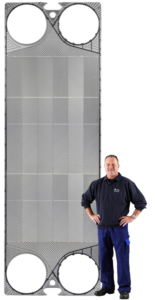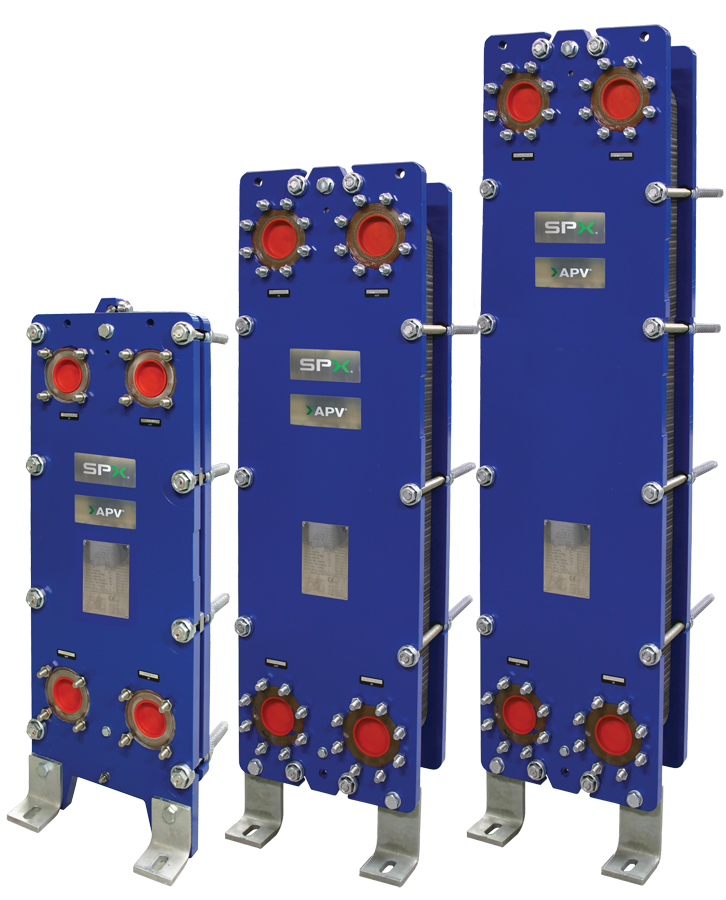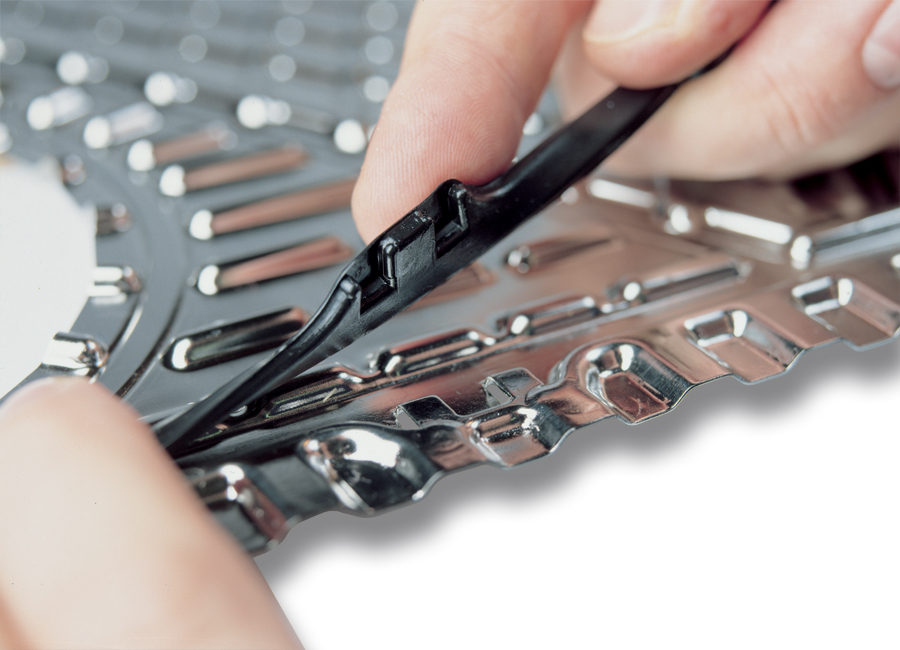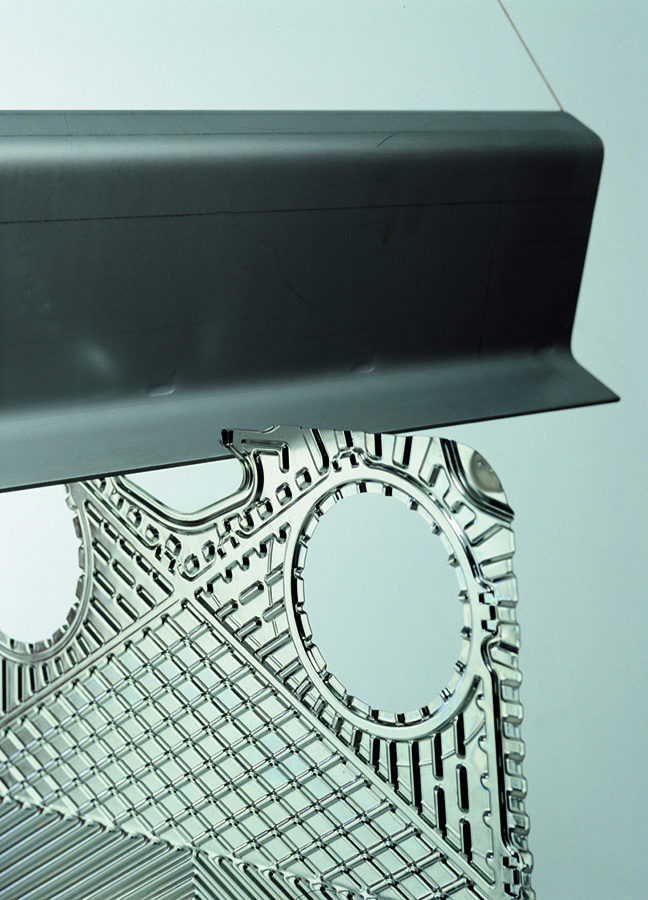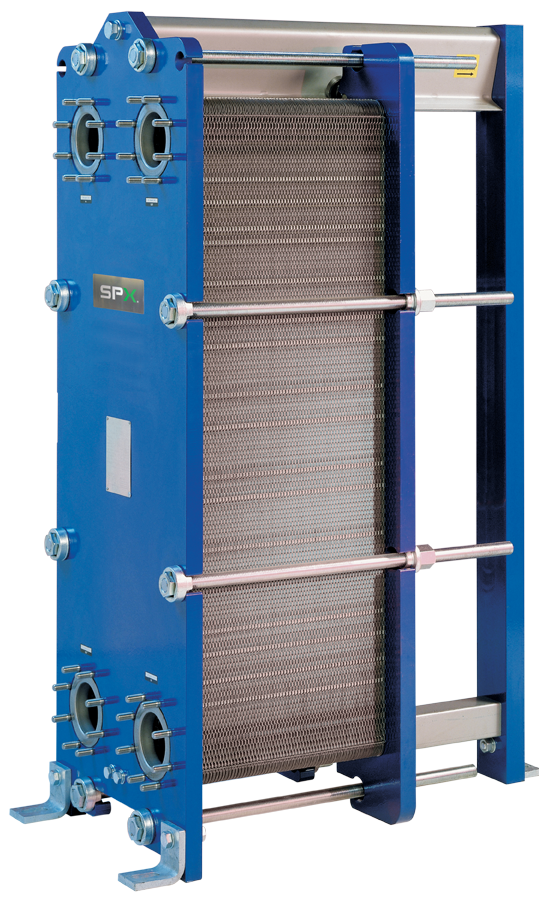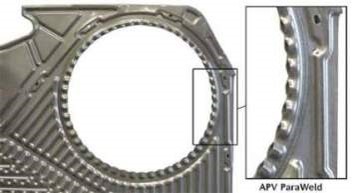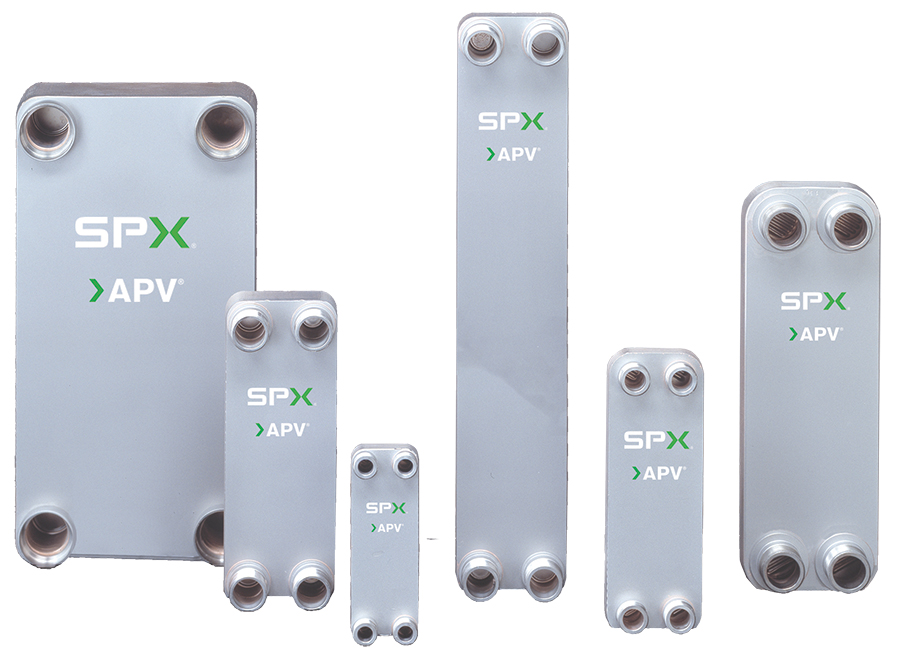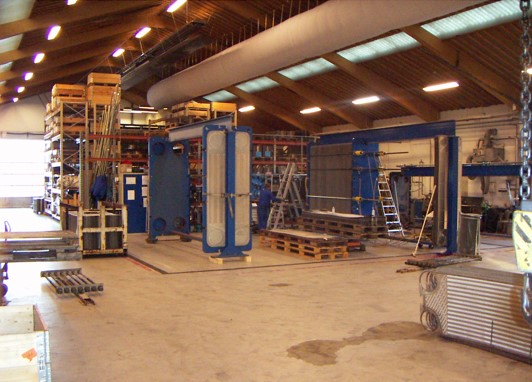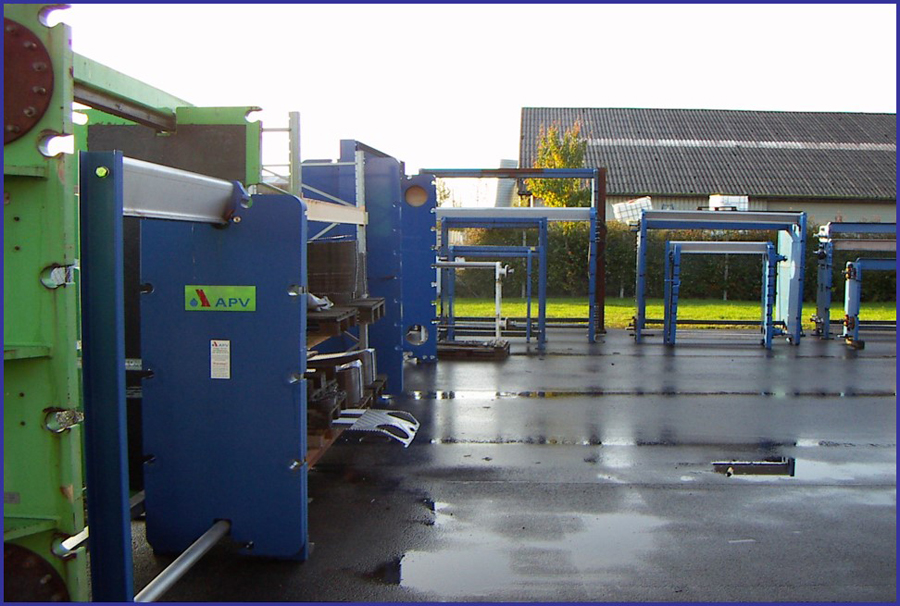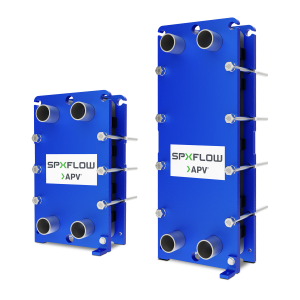Plate heat exchangers
Plate heat exchangers for industrial purposes
The plate heat exchanger’s unique design provides maximum heat exchange area in comparison to its size. The product range has equipment available in many materials to be able to fulfil our client’s needs from low flows up to flows of 4500 m3/h per unit.
CAMpreq together with SPX APV in Denmark will help you through the process of chosing the model which suits the application best. And we can provide service both on site or in SPX APV’s own work shop in Kolding Denmark when required.
APV plate heat exchangers are available in several different models and designs within these types:
- Gasket type
- Semi-welded
- Brazed type
Gasket type plate heat exchangers
The product range today consists of plates ranging from 0,01 up to 4,6 m2 heat exchange area per plate. Part of the APV product range are equipped with their own developed and patented special “Easy Clip” gasket holders which make gasket replacement much more simple and quick to perform, and without any requirements for adhesives, glues etc.
The plate guide bar has been specially developed to improve weight distribution equally and perfectly straight in order to increase life time and general availability as well as simplify maintenance.
Semi welded plate heat exchangers – for gases or dangerous media
Semi welded plate heat exchangers are used for aggressive media such as H2SO4 or cooling agents such as ammonia or freon.
With its special design by name ParaWeld every second plate is equipped with a normal plate packing and the others are welded with only one o-ring per plate on the product side.
Brazed plate heat exchangers
We have a wide range of compact brazed type plate heat exchangers which are especially suited for heating of water, district heating, gas boiler and sun heating applications. Very commonly used in the district cooling circuits outer end, i.e. in the building towards which the heat exchange is done from the central system grid.
Service and maintenance of many different types and brands
Through APV’s very exprienced and knowledgable service personnel, we can provide first class service both on site or in APV’s own work shop in Kolding, Denmark.
They are able to service not only their own models and brand of plate heat echangers, but also many of their competitor’s models and brands. They stockpile different sizes of plates, gaskets, frames and other parts and have equipment and pressure plates to enable test pressuring of the plate packs before delivery to client.
Gasked type plate heat exchangers are by design very compact and with a large heat transfer surface.
The plates and gaskets can be selected in a number of different materials. It is actually the type of fluid and the performance of the exchanger that is indicative.
To optimize pressure drop and performance, you can choose from a number of different options. You can, among other things, work with the number of passes (see picture below) in the exchanger and angles on the individual plates’ herringbone pattern.


